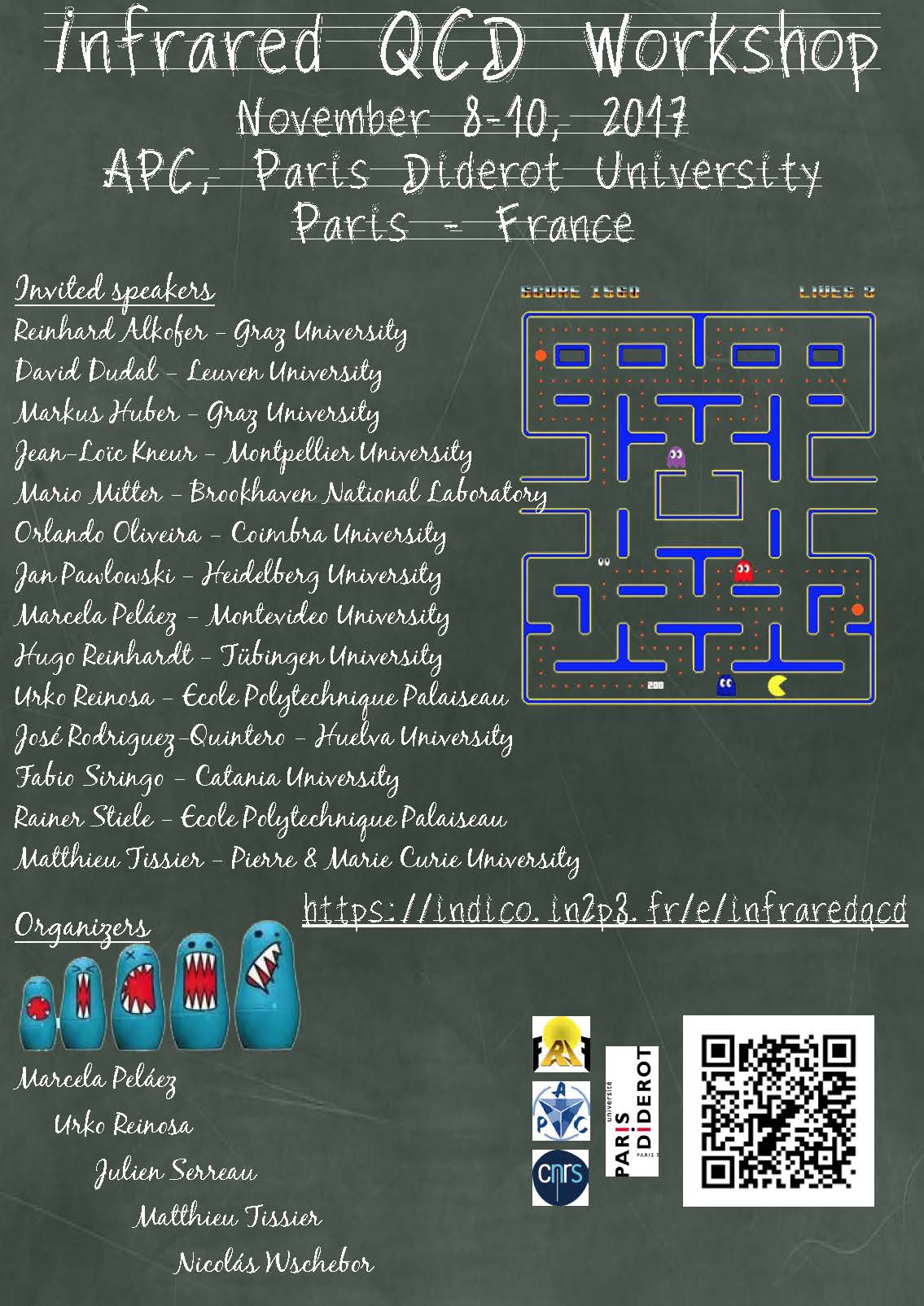Infrared QCD
→
Europe/Paris
483A - Malevitch (APC)
483A - Malevitch
APC
University Paris Diderot
Description
|
The workshop aims at bringing together experts in the field of infrared aspects of Yang-Mills theories and QCD, in particular, in the context of (Landau gauge) correlation functions, both in the vacuum and at finite temperature and density. State of the art calculations employing various (lattice and continuum) approaches as well as crucial open issues concerning, e.g., the dynamical generation of a gluon mass, or the phase diagram and thermodynamics of QCD will be critically discussed. |
 |
 |
Contact : Julien Serreau
